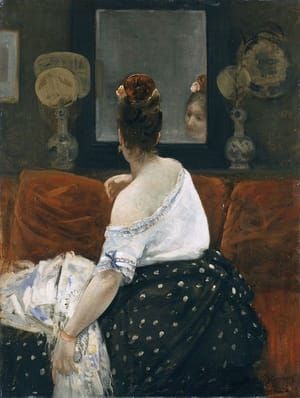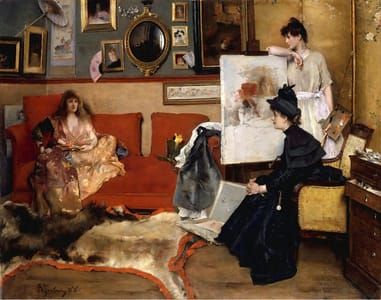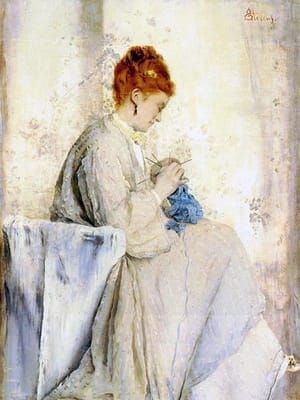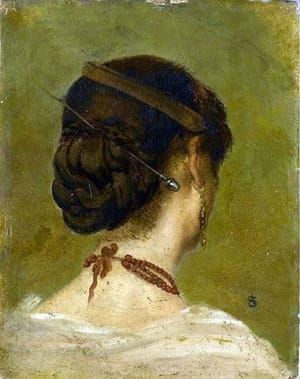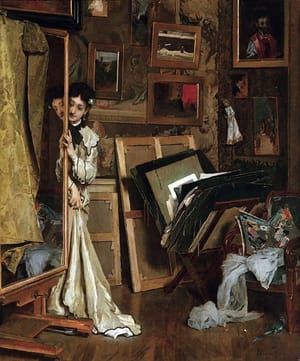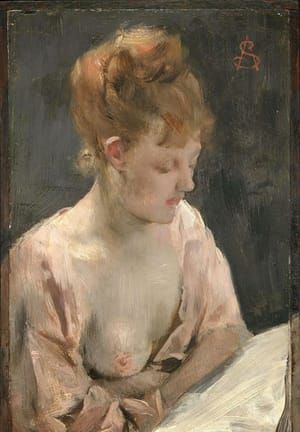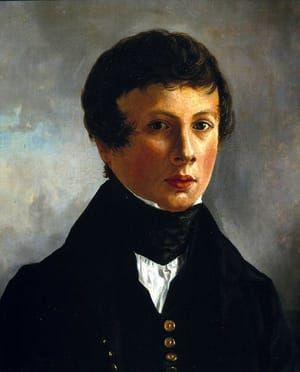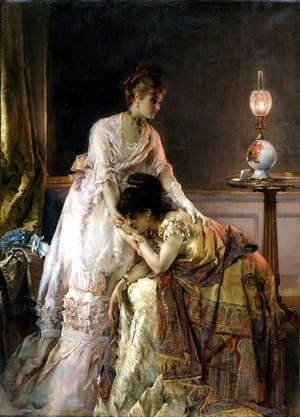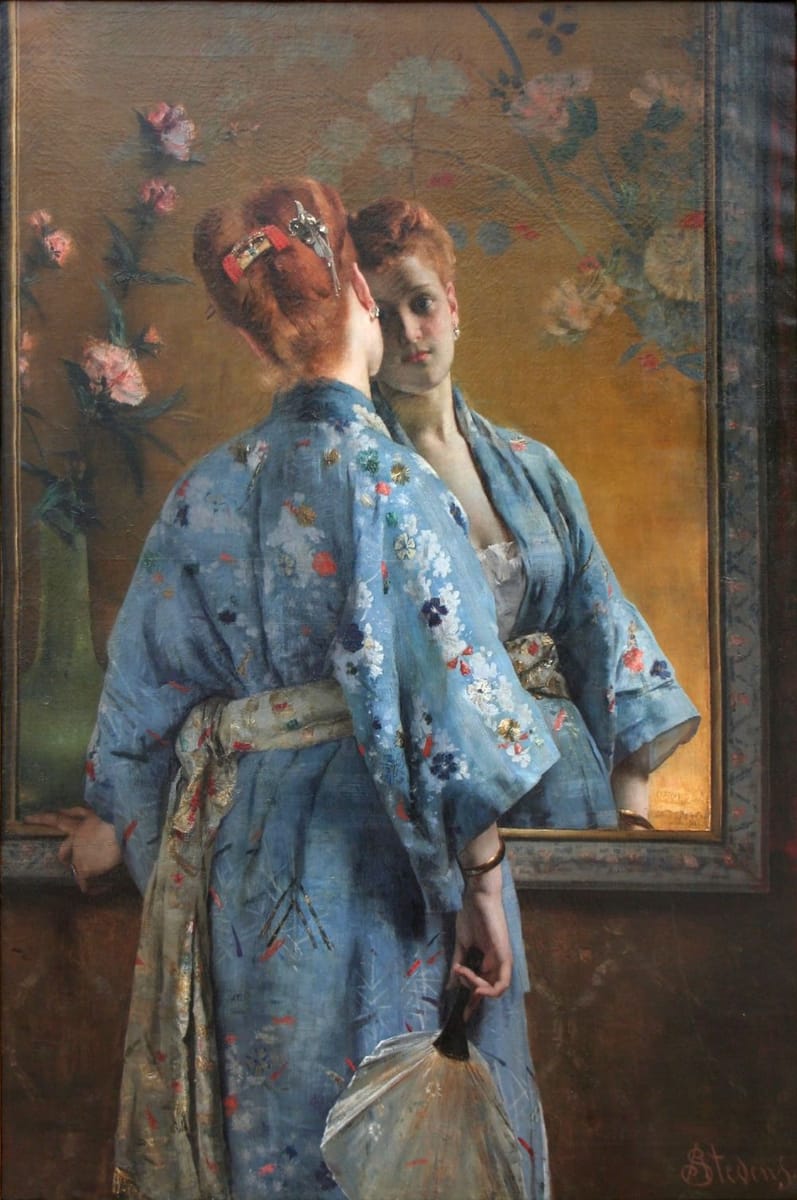

The Japanese Parisian, 1872
Alfred Stevens
In 1855 Japan closed its first trade treaties with the West and soon Oriental jewelry, Kimono's, tea and prints appeared on the European market. Alfred Stevens, who was known as an eclectic collector in Paris, also filled his house from 1862 with a huge amount of Japanese trinkets. In his home he even had a separate Chinese room full of umbrellas, masks, kimono's, room screens, porcelain, and so on.
The Japanese art of printing became a major influence on painting and decorative arts. Like James McNeill Whistler, with whom he maintained close relationships, Stevens also included many Oriental influences in his work. Both artists processed these influences into a kind of aesthetic painting style that was most clearly expressed in a series of female portraits. La Parisienne Japonaise is a typical example. Nearly all the objects seen in the painting are Japanese and probably come from Stevens's personal collection.
La Parisienne Japonaise shows a beautiful woman in a gracefully decorated blue kimono, with a fan in her right hand, facing a mirror in which she looks somewhat dreamy. The mirror image also gives the viewer an impression of the space in which she is located, but a room screen behind her deprives a further view, giving the attention as usual to the model.
Stevens portrays his model in a remarkably intimate manner. Not only does he show her in her private environment, but also in her private clothes. The kimono, worn as a robe, supports the intimacy of the portrait. The striking clothing ensures that the young woman is not only strongly present in the picture plane, but her pregnant presence also tells a story, as is the case with almost all women in Stevens portraits. It calls for interpretation: what's in her mind?
As an artist, Stevens was always very interested in women's fashion. In his opinion, clothes said something about the character of the wearer and showed how much she was aware of the latest developments in society. The Parisienne depicted in Steven's oeuvre immerse themselves into the world of fashion, not so much because of comfort, but rather because they want to fill their lives with something of value. Fashion makes the life of the worldy ladies less empty. At the same time, Stevens reinforces this emptiness through the subtle use of mirrors and perspective constructions, as seen in La Parisienne Japonaise. This emphasizes the opaque clothing, in this case the kimono as a gown, at the same time the theatrical aspect of Parisian life at that time.
(Google translation of https://nl.wikipedia.org/wiki/La_Parisienne_Japonaise)
59 x 41 in
Uploaded on Apr 27, 2018 by Suzan Hamer
Alfred Stevens
artistArthur
Wait what?


